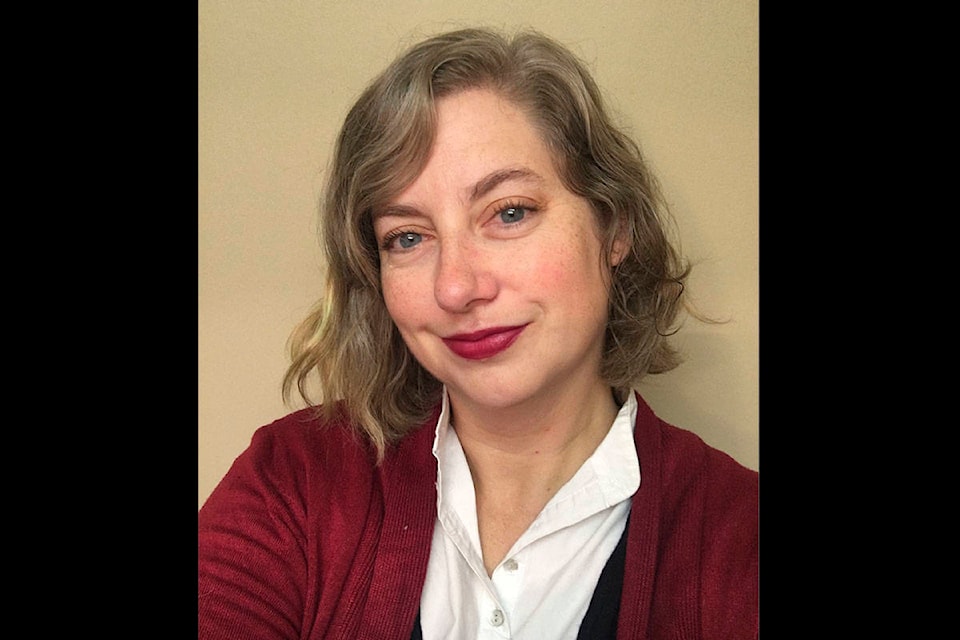When you’re translating a script for a movie set 20,000 years ago, what does language sound like?
That’s the question Dr. Christine Schreyer was challenged to answer for the feature film, Alpha. She invented a language she dubbed Beama, using a combination of intensive research and creativity.
“These languages are considered to be world-building. We’re making an authentic world, but we’re also doing it with pre-history,” Schreyer said.
The Yukon Beringia Interpretive Centre hosted a virtual talk with Schreyer on March 4, who discussed her process of inventing a language that was historically plausible for the Ice Age.
Alpha centres around a young man in prehistoric times who has been separated from his tribe during a buffalo hunt. He befriends a wolf companion, who becomes history’s fictitious first dog-as-man’s-best-friend. The film was released in 2018.
Schreyer was enlisted for Alpha with an already impressive resumé as an inventor of languages, or “conlangs”. She is an associate professor of anthropology at the University of British Columbia’s Okanagan campus, and her main academic research is on language documentation.
Her first film was Man of Steel, for which she developed a writing system for Kryptonian, Superman’s language. She also previously worked on languages for Power Rangers.
Schreyer explained on March 4 that there are different types of invented languages. She used Klingon - the language in Star Trek - as a famous example. Klingon, unlike what she invented for Alpha, doesn’t borrow any linguistic traits from already existing languages.
“Mark O’Brien … invented Klingon trying to make it utterly alien. It has sound combinations you would never have in a natural language, it has the weirdest grammar in the world,” Schreyer said.
Schreyer adopted a different strategy when developing Beama, which she translates as “all of us talk.” She took bits and pieces from what anthropologists imagine for prehistoric language as a source of inspiration.
“The first thing I did was, I started researching languages set 20,000 years ago using proto-languages,” Schreyer said.
Proto-languages are the imagined ancestors of modern languages, she explained. She researched ancient European and Asiatic languages, as well as Dene-Caucasian languages, which are the early languages of the Yukon and Siberia.
“I picked what was in common between all of these proto-languages to develop (Beama’s) phonetic inventory,” Schreyer said.
| A scene from Alpha, a film in which Schreyer created a language called Beama, among others. (Submitted) |
Schreyer gave Beama some ejective consonants — short clicking sounds — which can be sourced back to Yukon Indigenous languages.
“We have a lot of those in Dene languages, people use them all the time in Tlingit … and you see them in the writing systems in the Yukon,” Schreyer said.
Schreyer took instruction from the film’s director in combination with her research.
“Albert Hughes told me, ‘Languages I want to hear it sound like are Italian and Spanish, they sound pretty to me, they’re melodic,’ and that’s because of how their syllables are structured,” Schreyer said.
“So I use that a lot, and that’s actually what research says Dene-Caucasian sounds like.”
The original plan for one prehistoric language spiralled into many, as the film progressed.
In one scene of the film, members of two different tribes meet and converse.
“I thought, well, why would everybody speak the same? If we have people who are living apart all winter long, who only come together to hunt, why wouldn’t they sound different? So, I made dialects of the language,” Schreyer said.
“It’s like Coastal Alaskan Tlingit, versus inland Tlingit. There’s little different ways of saying things.”
In another section of the film, Neanderthals interact with the films’ Cro Magnon main characters.
“They originally just had them doing grunts … I was like, no, we’re 100 per cent not doing this,” she laughed. “So, I made a Neanderthal language as well.”
Schreyer also incorporated Yukon First Nation metaphor into the Beama language. When a character references death, they say they are “walking to the other forest,” which is a reference to a similar Tlingit metaphor for death.
Once she had developed a skeleton for the language, she began creating sentence structure and translating the filmmakers’ script.
The entire film is spoken in Beama with subtitles, so Schreyer was then challenged to teach the language to the cast.
“I trained all the actors over Skype,” she said.
Jóhannes Haukur Jóhannesson, who plays Tau in Alpha and is known for his earlier role on Game of Thrones, immersed himself fully into learning Beama.
“(He said), ‘How do I say ‘thank you’, I want to say ‘no, don’t move forward, move on, circle,’ so this was everything I was developing for him,” Schreyer said.
“He wanted to be able to improvise in Beama while he was filming, which was amazing.”
During a media release for the film, Jóhannesson spoke highly of Beama.
“As I was learning, I began to see a pattern and it started to make sense,” Jóhannesson said.
“Then it just jumped out, word by word. Phrase by phrase. You could really feel this was not thrown together in a day. This was built with knowledge and craftsmanship. The grammar was so clear and well thought out, which made it easier to learn. Not to mention the beauty of how it sounds.”
The Beringia Interpretive Centre has been hosting frequent, free virtual Science Talks during the pandemic. All the talks are livestreamed to the Beringia Facebook page. On March 25, Dr. Jacquelyn Gill will present “Exploring the Lost Mammoth Steppe in a Siberian Time Machine.”
Contact Gabrielle Plonka at gabrielle.plonka@yukon-news.com
